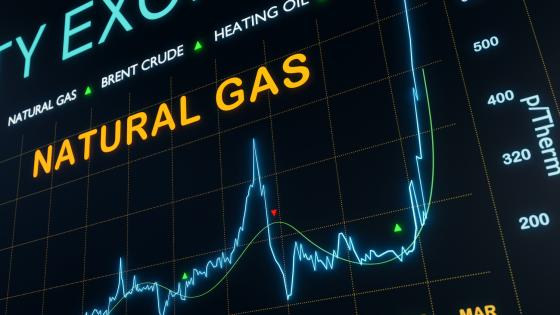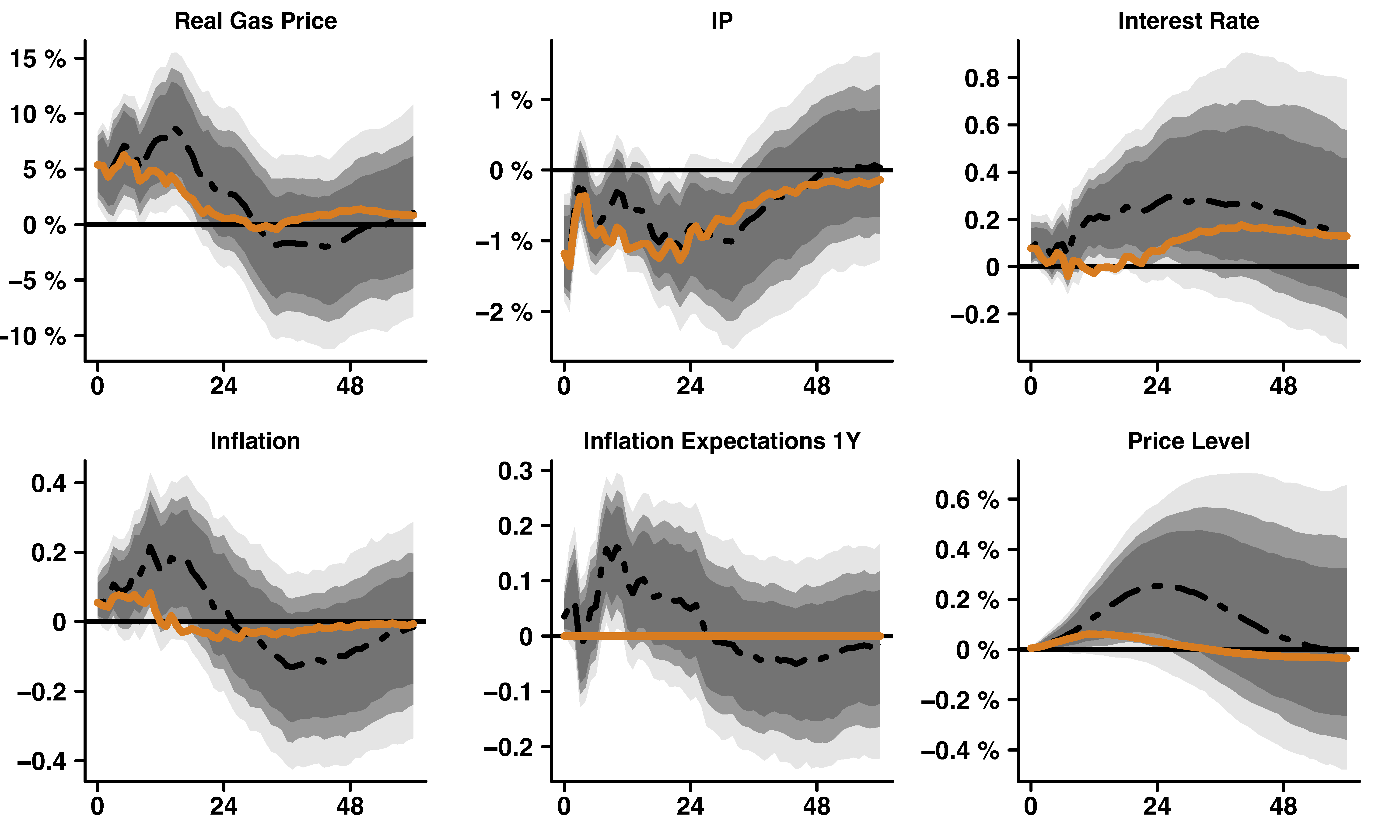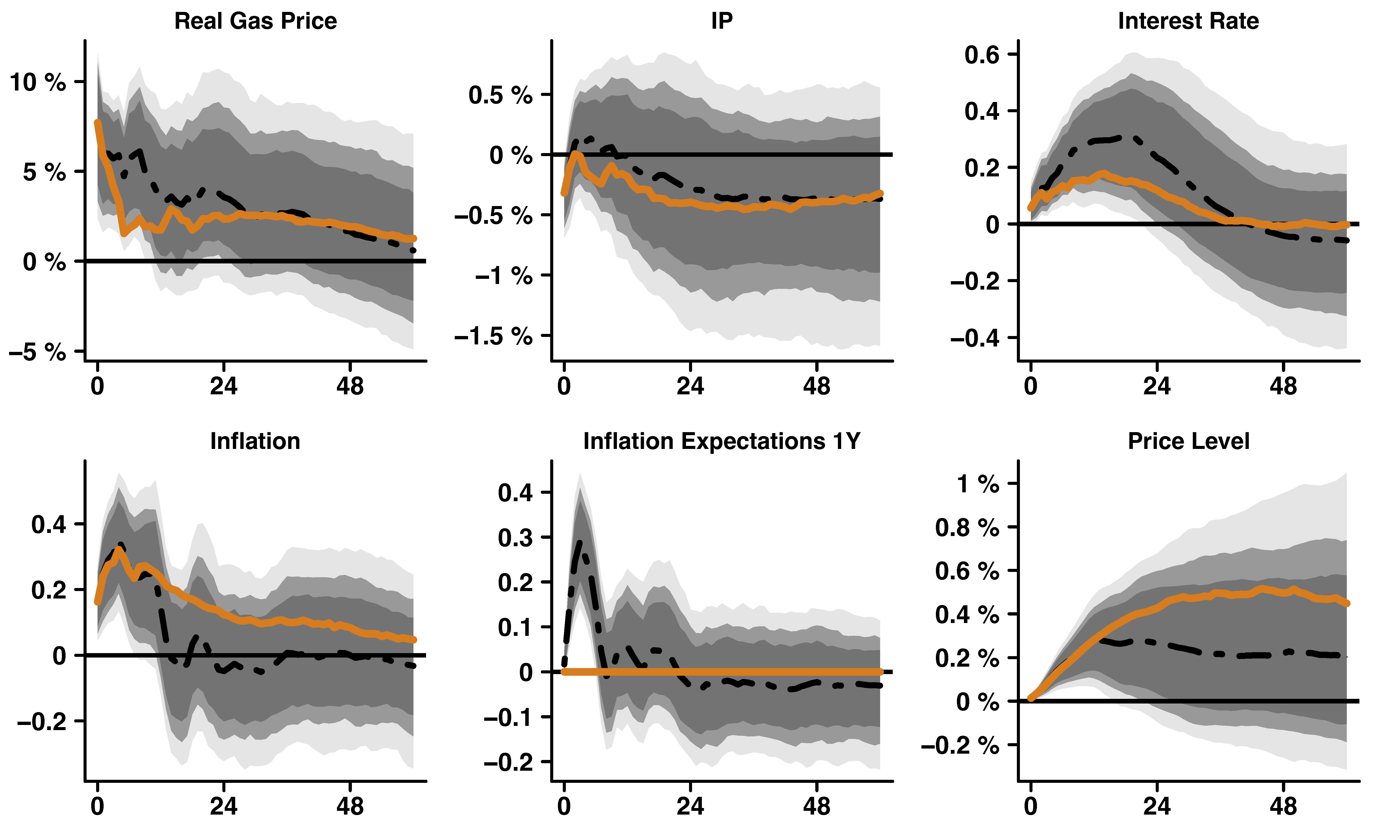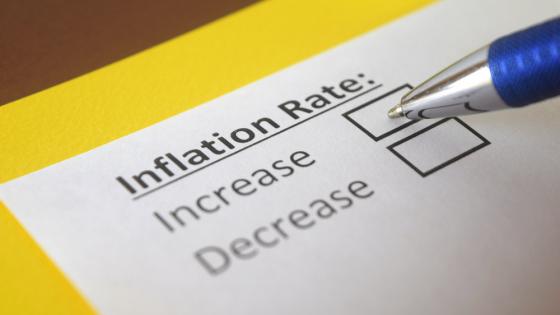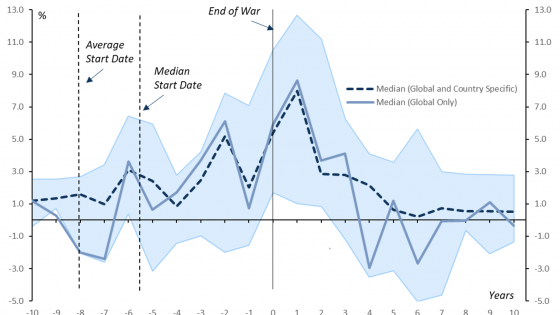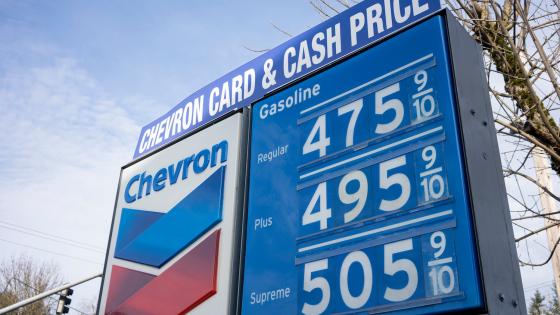Recent geopolitical events, particularly the Russian invasion of Ukraine in 2022, led to unprecedented increases in the price of natural gas in Europe. This put additional upward pressure on headline (and later also core) inflation caused by global supply chain disruptions due to the Covid pandemic (Daly and Chankova 2022). It is not only realised inflation but also expected future inflation that plays an important role in stabilisation policies. This is because households' consumption behaviour, firms' price-setting and investment decisions, and the outcome of wage negotiations ultimately depend on these factors. Long-run inflation expectations are crucial in particular for aggregate outcomes and economic policy when they deviate from the full-information rational expectations paradigm (Malmendier et al. 2022). The surge in European natural gas prices was also accompanied by a marked increase in measures of inflation expectations and increased, inter alia, concerns of de-anchored long-run inflation expectations. While the evolution of longer-run expectations, measured by inflation-linked swaps (ILSs),
eased those concerns over time, short-term ILSs in particular gained momentum in 2022 and stayed elevated, as depicted in Figure 1.
While there is abundant literature analysing the impact of commodity prices on the macro economy, it traditionally focuses on crude oil and its respective shocks in the 1970s (see, e.g. Barsky and Kilian 2002; Kilian 2008; Baumeister et al. 2010; Bjørnland et al. 2018). Studies explicitly tackling the role of natural gas in this setting are scarce and focused on rather small settings. However, given the importance of natural gas for Europe, due to the Green New Deal of the European Commission (see, e.g. Garicano et al. 2022) and the classification of natural gas as a transition energy source, in this study, we focus on natural gas. Moreover, due to the EU’s high import dependency, the EU is more susceptible to unforeseeable supply disruptions with potentially devasting fallouts (see, e.g. Stuermer et al. 2022 for a recent treatment of the topic).
This situation, together with the role of expectations, raises questions about how natural gas prices affect inflation and expectations, particularly the role of the latter as a propagating channel. Subsequently, we are also interested in whether the propagation mechanism works differently in the euro area compared to the US.
Figure 1 Real gas prices and one-year ahead inflation linked swaps in the euro area
Note: The real natural gas price is based on the European benchmark Dutch TTF (Title Transfer Facility) deflated with consumer prices.
Source: World Bank Pink Sheet and Macrobond.
In a new paper (Böck and Zörner 2023), we address these questions using a structural vector autoregressive (SVAR) model of the relationship between real natural gas prices, inflation expectations, and inflation. In addition to prices and expectations, the model also features demand-side measures, such as industrial production and the short-term interest rate. In terms of identification, we utilise a combination of zero- and sign restrictions and identify a real natural gas price shock, a monetary policy shock, an idiosyncratic inflation expectations shock, and supply- and demand-side-induced fluctuations. Additionally, we employ external variable constraints for the real natural gas price shock (Ludvigson et al. 2021) to separate it from potential confounding commodity shocks. Specifically, we impose that this shock only has low correlations to identified structural oil price shocks.
In order to investigate the role of inflation expectations in propagating real gas price shocks, we conduct a structural scenario analysis (SSA) following the recent contribution by Antolin-Diaz et al. (2021).
A real natural gas price shock increases inflation and features strong second-round effects
The black dashed lines in Figure 2 report the results of a one standard deviation unanticipated real natural gas price shock in the euro area. This shock raises real gas prices by about 5% on impact. Industrial production falls substantially by about 1.1%, while the monetary policy stance turns restrictive. The reaction of inflation and short-term ILS is muted on impact but reaches its maximum after about 12 to 18 months after the shock. In addition, the effects are still present for longer-dated swaps, albeit with a slightly less pronounced magnitude. The largest increase in inflation after a 5% increase in the real gas price is 0.2%.
We explore the role of the expectations channel in propagating a real natural gas price shock with structural scenario analysis. To do so, we assume that inflation expectations do not react to a real natural gas price shock, as depicted by the solid orange line in Figure 2. Furthermore, we impose that the idiosyncratic inflation expectations shock is the offsetting force in the model.
The responses of both the real gas price and industrial production do not deviate substantially from the baseline. In contrast, the responses of interest rates and inflation do differ from the baseline responses. The counterfactual responses show more muted reactions on impact, pointing to less nominal adjustments. Similarly, the monetary authority reacts more strongly if the expectations channel is present. This corresponds to the mechanism of the Phillips curve, which offers a trade-off between economic slack and inflation expectations. Thus, our counterfactual analysis shows that the transmission of the energy price shock happens mostly via the expectation channel and to a lesser extent via the direct cost channel. The pass-through of inflation expectations to inflation is close but clearly below unity. Finally, the maximum price level response is only a quarter of the size of the baseline response, pointing again to a rather strong adjustment mechanism via the expectations channel. To conclude, the natural gas price shock mainly transmits through inflation expectations.
Figure 2 Impulse response functions and the counterfactuals to a real gas price shock in the euro area
Note: The real natural gas price shock is identified with sign restrictions and standardised to a one standard deviation increase. The logarithm of the price level is computed afterwards as the cumulative sum of the inflation response. The Black dashed line denotes the posterior median responses, while grey-shaded areas depict the 68/80/90% confidence intervals. The solid orange line denotes the counterfactual exercise, in which the expectation channel is shut off. The responses of the real gas price, industrial production, and the price level are in per cent, while the interest rate, inflation, and inflation expectations are scaled to (annualised) percentage points. The horizontal axis denotes the horizon in months.
Source: Own computations.
US data reveal different results in real natural gas price and inflation response: A counterfactual exercise shows less pronounced second-round effects
Repeating the exercise with US data over the same period reveals a different picture, as seen in Figure 3. In the baseline, the real natural gas price quickly returns to zero and industrial production drops only on impact before almost immediately returning to zero. Inflation is elevated for about one year, while inflation expectations shoot up only temporarily with a rather quick mean reversion. Most interestingly, the counterfactual exercise is remarkably different to the euro area results. Shutting down second-round effects via inflation expectations does not alter the responses substantially. Most importantly, inflation does not show a big difference from its unrestricted response in the first year, and thus we do not see a strong impact on the price level either for the first year.
Figure 3 Impulse response functions and the counterfactuals to a real gas price shock in the US
Note: This figure reports the results based on US data. Details can be found in the notes of figure 2.
Source: Own computations.
One explanation might be the lower persistence of the price shock due to the US being a net exporter of natural gas. Europe neither produces a significant share of natural gas nor has a diversified supply structure. Hence, the shock persistence is substantially higher, which allows the impact to fully materialise over time.
Taking strong second-round effects of energy price shocks into account remains crucial for controlling inflation in Europe
Our findings are particularly important in the transition period to renewable energy sources. Given that the EU relies heavily on imported natural gas, which it has recently classified as green energy, it is increasingly vulnerable to supply-side disruptions in these markets. It is crucial to note that the expectations channel plays a pivotal role in this context, which broadly applies to other supply-side disruptions as well. Therefore, along with implementing fiscal measures to safeguard and fortify Europe's energy supply, it is vital to continue monitoring inflation expectations closely. Eventually, Europe may enjoy more resilience against destabilising forces stemming from commodity markets.
Authors' note: The views presented are those of the authors and do not necessarily reflect the official position of the Oesterreichische Nationalbank or the Eurosystem.
References
Antolin-Diaz J, I Petrella and J F Rubio-Ramirez (2021), “Structural Scenario Analysis with SVARs”, Journal of Monetary Economics 117: 798–815.
Barsky R B and L Kilian (2002), “Oil and the Macroeconomy Since the 1970s”, Journal of Economic Perspectives 18(4): 115–134.
Baumeister, C, G Peersman and I Van Robays (2010), “The Economic Consequences of Oil Shocks: Differences across Countries and Time”, RBA Annual Conference Volume (Discontinued), in R Fry, C Jones and C Kent (eds), Inflation in an Era of Relative Price Shocks, Reserve Bank of Australia.
Bjørnland H C, V H Larsen and J Maih (2018), “Oil and Macroeconomic (In)stability”, American Economic Journal: Macroeconomics 10(4): 128–51.
Boeck M and T O Zoerner (2023), “Natural Gas Prices and Unnatural Propagation Effects: The Role of Inflation Expectations in the Euro Area”, available at SSRN .
Daly, K and R D Chankova (2021), “Inflation in the aftermath of wars and pandemics”, VoxEU.org, 15 April.
Garicano L, D Rohner, B Weder di Mauro (2022), “Increased urgency for the green transition in Europe”, VoxEU.org, 23 September.
Kilian L (2008), “The Economic Effects of Energy Price Shocks”, Journal of Economic Literature 46(4): 871–909.
Ludvigson S C, S Ma and S Ng (2021), “Uncertainty and Business Cycles: Exogenous Impulse or Endogenous Response?”, American Economic Journal: Macroeconomics 13(4): 369–410.
Malmendier, U M, M Weber, F D'Acunto (2022), “Learning About Inflation Expectations from the Data”, VoxEU.org, 7 May.
Stuermer, M, F Toscani, A Pienkowski, A Pescatori, K Foda, M Flanagan, G Di Bella (2022), “The Potential Impact of Gas Supply Disruptions in Europe: An update”, VoxEU.org, 12 October.
